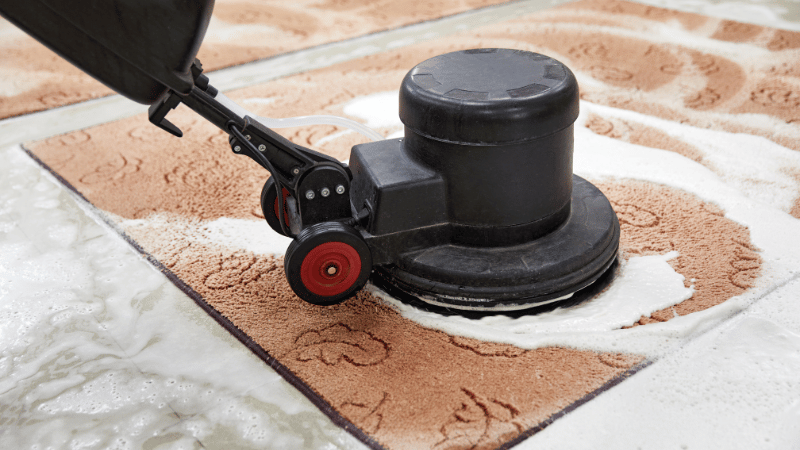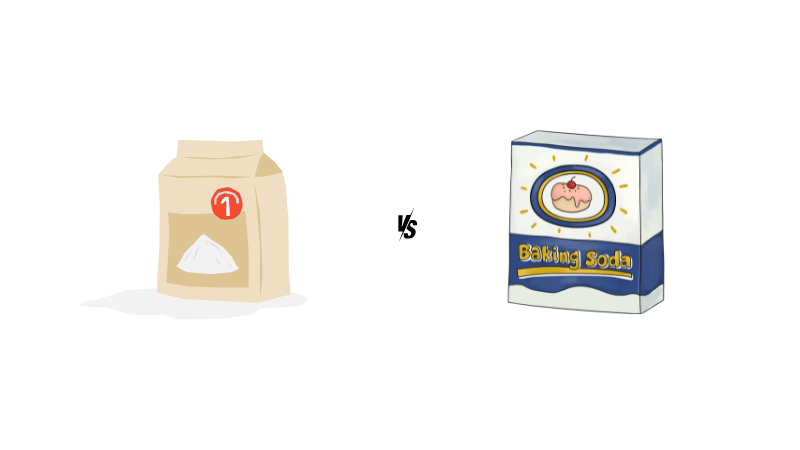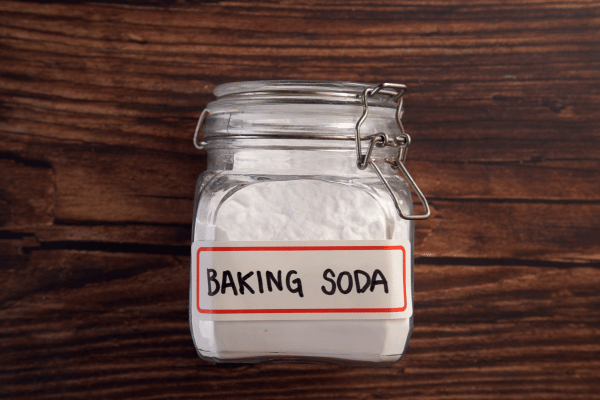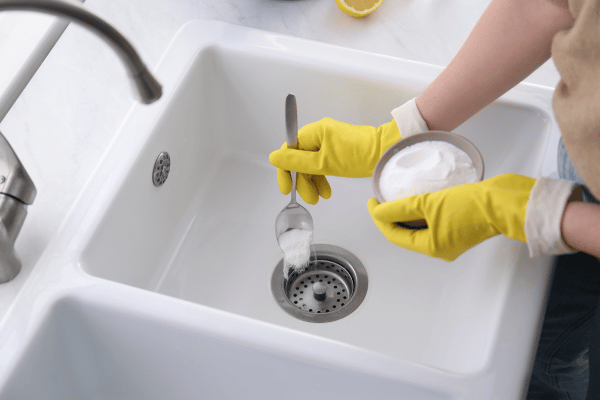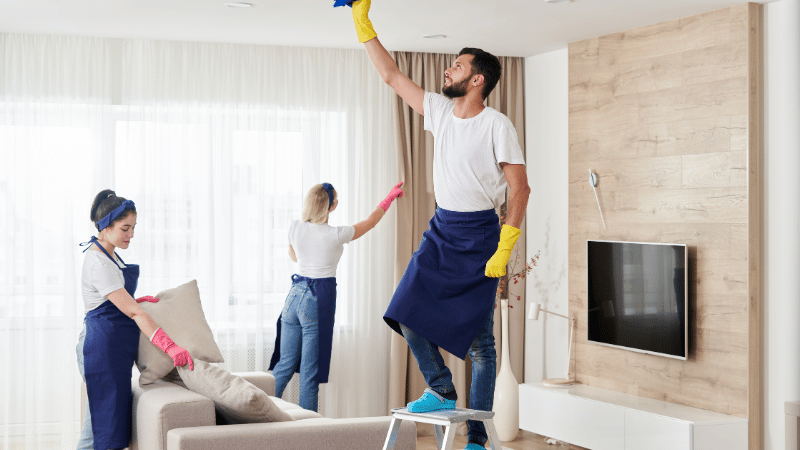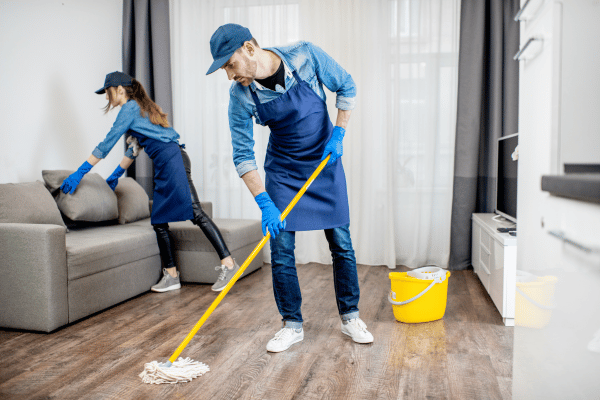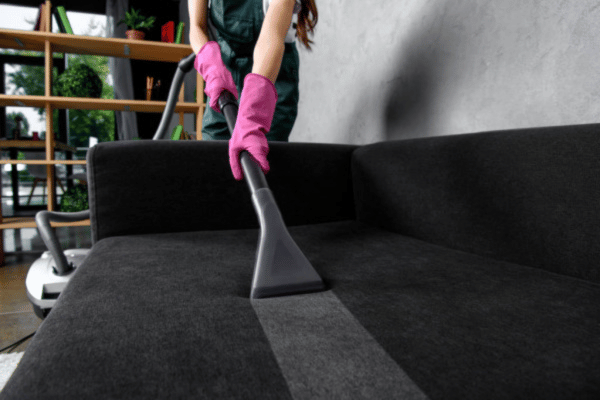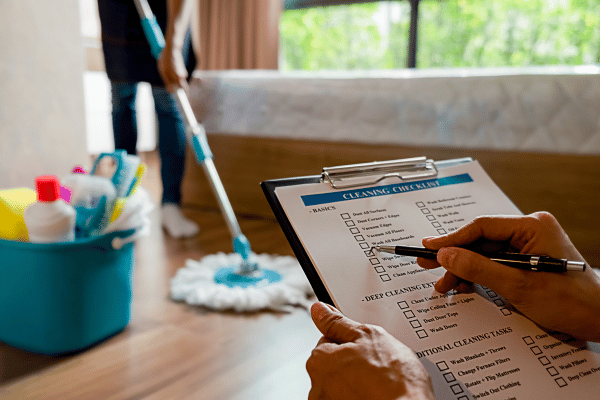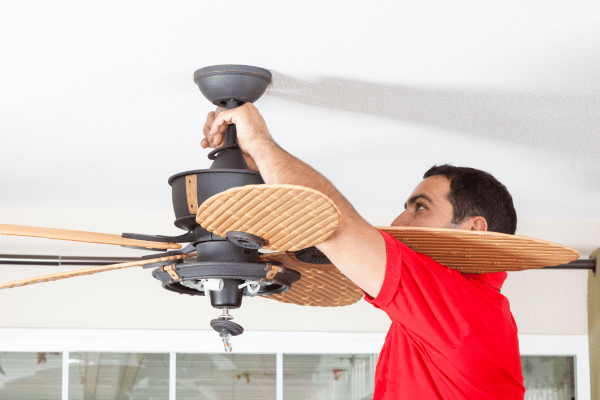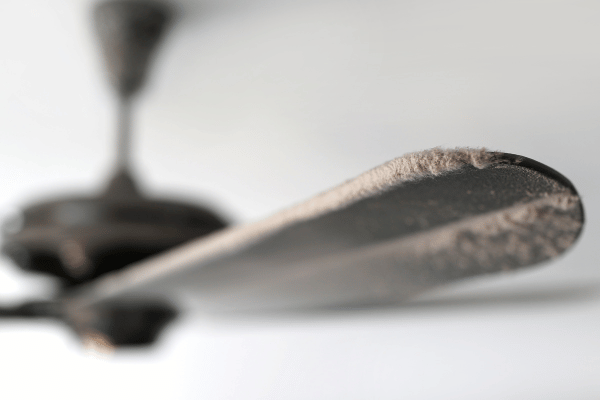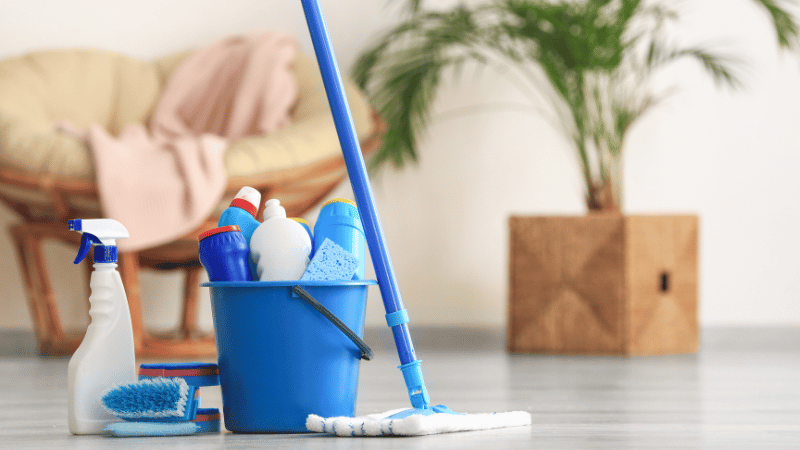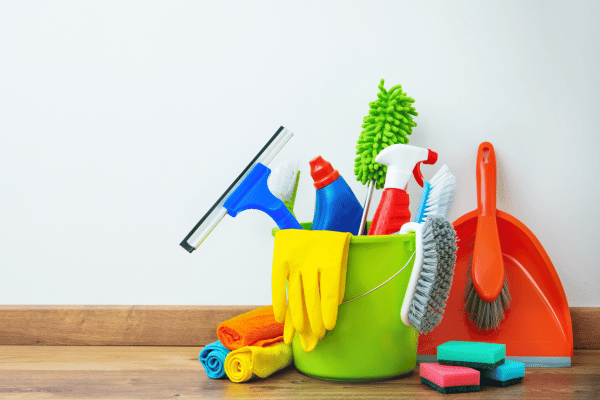Keeping your carpets clean is essential for a healthy and welcoming home. Carpets can enhance the comfort and beauty of your space, but they also face daily challenges like tough stains, lingering odors, and dirt buildup. Left unchecked, these issues can lead to worn-out carpet fibers and an uninviting living area.
In this guide, we’ll uncover practical tips and tricks for cleaning carpets effectively, whether you’re dealing with high-traffic areas or treating spills. From quick solutions using household items to deep cleaning techniques with a carpet cleaning machine, you’ll learn how to maintain your carpets without relying on harsh chemicals.
By the end, you’ll have all the tools you need to handle common carpet cleaning challenges and keep your home fresh and inviting. Let’s dive into the best cleaning methods to give your carpets a new lease on life!
Identifying Your Carpet Type
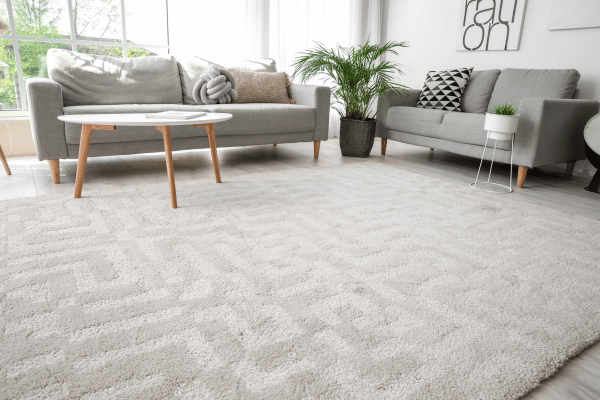
Understanding your carpet type is the first step toward effective cleaning. Most carpets fall into categories like cut pile, loop pile, or a blend of both. You can identify the type by observing its texture: cut pile carpets have soft, individual strands that stand upright, while loop pile carpets feature loops of yarn that create a durable, textured surface.
Additionally, some carpets are made of synthetic materials like nylon or polyester, while others are crafted from natural fibers like wool.
How Carpet Type Affects the Cleaning Method
The type of carpet you have plays a significant role in choosing the right cleaning process. For example, wool carpets require gentle cleaning solutions to protect their fibers, while synthetic carpets can handle tougher cleaning products and methods.
High-pile carpets may trap more dirt and debris, needing a deep clean with a carpet cleaning machine, while low-pile carpets are easier to maintain with regular vacuuming and spot treatments. Knowing your carpet type helps you select the best techniques how to clean carpet to preserve its look and lifespan.
Common Carpet Materials
Understanding the material of your carpet is crucial for choosing the right cleaning method and products. Let’s explore some popular carpet materials and how they impact cleaning practices:
1. Nylon
Nylon is one of the most durable and stain-resistant carpet materials, making it a popular choice for high-traffic areas. It holds up well against wear and tear, making it easy to clean with most methods.
- Best Cleaning Methods: Use a carpet cleaning machine with a mild cleaning solution, or spot-treat stains with a vinegar solution or carpet shampoo.
- Chemicals to Use: Gentle dish soap or carpet-specific cleaning solutions.
- Chemicals to Avoid: Harsh chemicals like bleach, which can damage fibers over time.
2. Polyester
Polyester is known for its vibrant color retention and softness, but it’s less resistant to stains and tends to trap more dirt. It’s ideal for homes without heavy foot traffic.
- Best Cleaning Methods: Spot-clean spills with baking soda and a spray bottle, followed by a thorough vacuum. Deep cleaning with warm water is also effective.
- Chemicals to Use: Mild detergents or household items like white vinegar.
- Chemicals to Avoid: Strong solvents, as they can leave residue or fade the material.
3. Wool
A natural, luxurious option, wool is soft, durable, and naturally resistant to stains. However, it’s highly absorbent, so excess moisture can lead to mold or odors.
- Best Cleaning Methods: Use a scrub brush with a gentle cleaning solution and air dry completely. A stain treatment should always be tested on an inconspicuous area first.
- Chemicals to Use: Wool-safe carpet cleaners or a mix of plain water and a few drops of dish soap.
- Chemicals to Avoid: Bleach or harsh detergents, which can harm the fibers.
4. Acrylic
Acrylic mimics wool but is synthetic and less expensive. It’s stain-resistant and easier to maintain than wool but not as durable as nylon.
- Best Cleaning Methods: Spot-treat stains with a mix of equal parts white vinegar and cold water. Vacuum regularly to remove loose dirt and debris.
- Chemicals to Use: Mild cleaning solutions and baking soda for deodorizing.
- Chemicals to Avoid: Harsh chemicals that can weaken the fibers.
5. Olefin (Polypropylene)
Olefin is highly stain-resistant and affordable, commonly used in outdoor or basement carpets. It resists moisture but can flatten under heavy traffic.
- Best Cleaning Methods: Treat spills immediately with a spray bottle and blot dry with old towels. Deep clean with hot water extraction to lift dirt.
- Chemicals to Use: Vinegar-based solutions or commercial carpet shampoos.
- Chemicals to Avoid: Oily or solvent-based cleaners, which can leave residue.
Identifying Carpet Pile Types
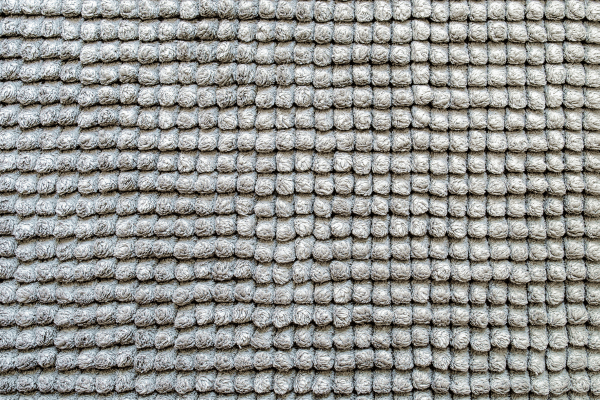
Cut Pile
Cut pile carpets have individual fibers that stand upright, creating a soft and plush surface. They’re popular for their luxurious feel and are often used in bedrooms and living spaces. This type requires regular vacuuming to remove loose dirt and maintain its texture.
Loop Pile
Loop pile carpets feature loops of yarn that are tightly woven, making them highly durable and resistant to wear. They’re ideal for high-traffic areas like hallways and offices. Cleaning involves a thorough vacuum to avoid trapping more dirt in the loops.
Saxony
Saxony carpets are a variation of cut pile with a smooth, even finish, offering a classic look. They’re best cleaned with a gentle vacuum and occasional deep cleaning to refresh the fibers without causing flattening.
Cut-Loop Pile
Cut-loop pile carpets combine both cut and loop fibers, creating textured patterns. They’re stylish and durable but can be tricky to clean. Spot cleaning is often necessary to maintain the design and texture.
How Pile Heights Affect Cleaning Techniques
Low pile carpets are durable and easier to clean, making them perfect for busy households or commercial spaces. A straightforward vacuuming routine is usually sufficient for maintenance.
High pile carpets, such as shag or frieze styles, offer a plush and luxurious feel underfoot. However, their dense fibers can trap more dirt and debris. A carpet cleaning machine and deep cleaning methods are recommended for these types.
Choosing the right cleaning method based on pile type and height ensures your carpets remain fresh, clean, and long-lasting.
Tools and Supplies for Carpet Cleaning
Essential Tools
Vacuum Cleaners
A reliable vacuum cleaner is the cornerstone of carpet care. Look for features like HEPA filters to trap fine dust and allergens, as well as strong suction power to remove loose dirt effectively. Vacuums with adjustable height settings work well for different carpet types.
Steam Cleaners
Steam cleaners are excellent for deep cleaning, as they use hot water to lift dirt and sanitize carpets. They’re ideal for tackling tough stains and high-traffic areas, leaving carpets fresh and deodorized.
Carpet Brushes
A good carpet brush helps scrub dirt and stains from carpet fibers without causing damage. Choose a brush with soft or medium bristles to avoid harming delicate materials like wool.
Stain Removers
Having a high-quality stain remover on hand is essential for quick action on spills and tough stains. Look for products that are safe for your specific carpet type and free from harsh chemicals that might damage the fibers.
Defoamers
Defoamers prevent excess foam buildup when using carpet cleaning machines or shampoos, ensuring a more efficient cleaning process and reducing residue on your carpets.
Microfiber Cloths
Microfiber cloths are perfect for blotting stains and drying treated areas. Their soft, absorbent material helps lift dirt and moisture without leaving behind lint or scratches.
Cleaning Products
Store-Bought Solutions vs. DIY Alternatives
Store-bought carpet cleaning solutions are convenient and effective for tackling tough stains, odors, and dirt. They come pre-formulated to target specific issues like pet stains or high-traffic dirt. However, they can be costly and may contain harsh chemicals that aren’t always safe for children or pets.
DIY alternatives, like baking soda and vinegar, offer a budget-friendly and eco-conscious way to clean your carpets. Baking soda works well for deodorizing, while a mixture of vinegar and water can effectively lift stains and freshen carpet fibers. These household items are gentle yet powerful enough for most cleaning tasks.
Eco-Friendly and Pet-Safe Options
For those who prioritize safety and sustainability, eco-friendly and pet-safe carpet cleaning products are excellent choices. Here are a few popular brands:
- Seventh Generation Carpet Cleaner: Made with plant-based ingredients, this cleaner is safe for both pets and the environment.
- Puracy Natural Carpet Cleaner: A non-toxic, biodegradable option that works effectively on stains and odors.
- Folex Instant Carpet Spot Remover: Highly recommended for its stain-removing power and non-toxic formula.
Routine Carpet Maintenance
Regular Vacuuming
Importance of Vacuuming Frequency
Vacuuming is a cornerstone of carpet care and should be done regularly to prevent dirt and debris from settling into the fibers. For high-traffic areas like hallways, living rooms, or entryways, vacuuming daily or every other day is ideal. Low-traffic zones, such as bedrooms or guest rooms, can be vacuumed once or twice a week. Adjusting the frequency based on usage helps maintain a clean and fresh appearance while extending your carpet’s lifespan.
Techniques for Thorough Cleaning
To achieve the best results, start by dividing your carpet into sections and vacuuming each area slowly, allowing the vacuum to lift dirt effectively. Use overlapping strokes for even coverage, and pay extra attention to high-traffic areas where dirt accumulates more. For deeper cleaning, adjust the vacuum’s height setting to match your carpet pile, and utilize attachments like crevice tools for edges and corners. Regularly empty the vacuum bag or canister to maintain suction power and efficiency.
Quick Action on Spills
Acting quickly is essential to prevent spills from turning into permanent stains. Begin by blotting the spill immediately with a clean cloth or old towels to soak up as much liquid as possible. Once the excess liquid is removed, apply a cleaning solution or a mix of equal parts white vinegar and warm water to the affected area using a spray bottle. Blot again gently to lift dirt and residue, then rinse with plain water and blot dry. Ensure the carpet air dries completely to prevent moisture-related issues.
Common Mistakes to Avoid When Treating Spills
- Rubbing the Stain: Scrubbing can spread the stain and damage carpet fibers. Always blot instead of rub.
- Using Harsh Chemicals: Strong cleaning products can discolor or weaken your carpet. Test any solution on an inconspicuous area first.
- Ignoring the Spill: Delaying cleanup allows stains to set, making them harder to remove.
- Over-Wetting the Carpet: Excess water can lead to moisture buildup, odors, and mold. Use only a small amount of cleaning solution and blot thoroughly.
Professional Cleaning
While regular vacuuming and spot treatments are essential, professional carpet cleaning is vital for maintaining your carpet’s longevity and appearance. Experts recommend scheduling professional cleaning every 12 to 18 months, depending on the level of foot traffic and overall use.
Professional cleaners use advanced techniques like steam cleaning or hot water extraction to remove deep-seated dirt, stains, and allergens that standard cleaning methods can’t address. This process rejuvenates your carpet fibers, leaving them looking fresh and extending their lifespan.
Deep Cleaning Carpet Methods
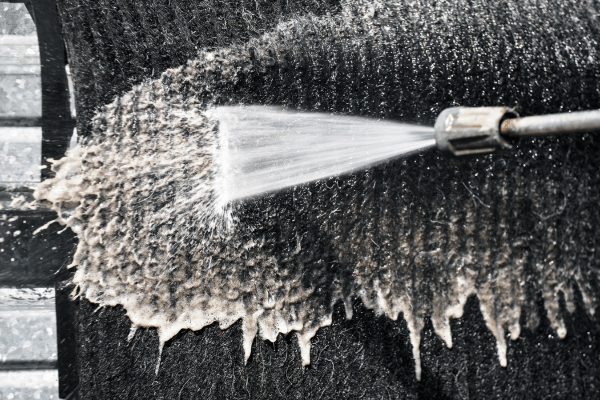
Steam Cleaning (Hot Water Extraction)
Steam cleaning, also known as hot water extraction, involves using a machine to inject hot water and cleaning solution deep into the carpet fibers. The combination of heat and pressure loosens dirt, debris, and tough stains. A powerful vacuum then extracts the water along with loosened particles, leaving the carpet clean and refreshed.
This method is highly effective for deep cleaning, as it removes embedded dirt, allergens, and bacteria that routine vacuuming cannot reach. It also helps restore the carpet’s texture and appearance, making it ideal for high-traffic areas and homes with pets or children.
When and How Often to Use This Method
Steam cleaning is recommended every 12 to 18 months as part of routine carpet maintenance. However, high-traffic spaces or carpets exposed to frequent spills and odors may require more frequent cleaning, such as every 6 to 12 months.
For best results, ensure the entire area of the carpet is vacuumed thoroughly beforehand to remove loose dirt. Allow sufficient drying time after cleaning—typically 8 to 12 hours—to avoid moisture-related issues like mold or mildew.
Steam cleaning is a reliable way to give your carpets a deep, restorative clean, maintaining their freshness and longevity.
Dry Carpet Cleaning
Dry carpet cleaning involves using specialized cleaning powders or compounds that are spread over the carpet and worked into the fibers with a machine or brush. These compounds attract dirt and debris, which are then vacuumed away. Unlike steam cleaning, this method uses minimal to no water, making it ideal for situations where quick drying is essential.
Dry cleaning is suitable for carpets in commercial spaces, high-traffic areas, or homes needing a quick refresh. It’s also a great choice for delicate materials like wool, as it minimizes the risk of over-wetting and damage.
Benefits for Quick Turnarounds and Less Water Usage
One of the biggest advantages of dry carpet cleaning is its rapid turnaround time. Since minimal water is used, carpets can be ready for use almost immediately, often within an hour. This method is especially beneficial for businesses or busy households where downtime needs to be minimized.
Additionally, dry cleaning reduces the risk of mold or mildew growth, which can occur when carpets remain damp for extended periods. It’s an eco-friendly choice in areas with water restrictions or for those seeking a low-moisture alternative.
Dry carpet cleaning offers a convenient and effective solution for maintaining clean carpets with minimal disruption.
Carpet Shampooing
Step-by-Step Guide for Using Carpet Shampooers
- Prepare the Carpet
Begin by vacuuming thoroughly to remove loose dirt, dust, and debris from the carpet. This ensures the shampooer can focus on deep-cleaning the fibers. - Mix the Cleaning Solution
Follow the manufacturer’s instructions to mix carpet shampoo with water in the shampooer’s tank. Use the recommended ratio to avoid overly concentrated or diluted solutions. - Test in an Inconspicuous Area
Apply a small amount of the solution to a hidden spot to ensure it won’t discolor or damage your carpet. - Shampoo the Carpet
Slowly move the shampooer across the carpet, working in small sections. Overlap strokes for even cleaning and avoid rushing to let the solution penetrate the fibers effectively. - Extract Excess Moisture
Use the shampooer’s extraction function to remove as much water as possible. Make multiple passes to ensure the carpet isn’t left overly wet. - Allow the Carpet to Dry
Open windows, use fans, or turn on a dehumidifier to speed up the drying process. Ensure the carpet air dries completely before replacing furniture.
Tips to Avoid Overwetting the Carpet
- Use the Right Amount of Solution: Stick to the recommended amount of shampoo and water to prevent oversaturating the carpet.
- Make Extra Extraction Passes: After shampooing, go over the carpet multiple times with the extractor function to remove excess moisture.
- Dry in Sections: If possible, clean and dry one section at a time to monitor moisture levels.
- Ensure Proper Ventilation: Always provide good airflow to aid in faster drying and reduce the risk of moisture buildup.
Spot Cleaning Stains
Food and Beverage Stains
Spills like coffee, wine, and juice are common culprits for carpet stains, but quick action and the right methods can minimize damage. Here’s how to tackle these stains using both store-bought and DIY solutions:
1. Coffee Stains
- Store-Bought Solution: Use a carpet stain remover designed for tannin-based stains. Apply it to the stain, let it sit for a few minutes, then blot gently with a clean cloth.
- DIY Solution: Mix equal parts white vinegar and cold water in a spray bottle. Spray the mixture onto the stain, blot with a white cloth, and repeat until the stain lifts. Rinse with plain water and blot dry.
2. Wine Stains
- Store-Bought Solution: Opt for an oxygen-based cleaner or a carpet stain remover labeled for red wine stains. Apply according to the instructions and blot gently.
- DIY Solution: Sprinkle baking soda over the stain, then pour a small amount of vinegar over it to create a bubbling reaction. Blot the area with a white cloth until the stain disappears. Rinse with water and blot dry.
3. Juice Stains
- Store-Bought Solution: Use an enzyme-based cleaner to break down sugary residues from juice spills. Apply, let it sit, and blot away with a clean towel.
- DIY Solution: Combine a few drops of dish soap with warm water and gently dab the mixture onto the stain. Blot with a clean cloth to lift the stain, rinse with water, and blot dry.
Tips for Effective Spot Cleaning
- Always blot gently instead of rubbing to avoid spreading the stain or damaging carpet fibers.
- Test cleaning solutions in an inconspicuous area before applying them to visible spots.
- Work from the edges of the stain inward to contain its spread.
Pet Stains and Odors
- Act Quickly
Blot the area with a clean cloth or old towels to soak up as much urine as possible. Avoid rubbing, as it can push the liquid deeper into the carpet fibers. - Apply a Cleaning Solution
- Store-Bought Option: Use an enzymatic cleaner specifically designed for pet stains. These cleaners break down the proteins in urine, eliminating both stains and odors.
- DIY Solution: Mix equal parts white vinegar and cold water in a spray bottle. Spray the affected area generously, then blot with a clean cloth to lift the stain.
- Rinse and Extract
Rinse the area with plain water and blot dry to remove any cleaning solution residue. You can also use a wet vacuum to extract excess moisture for faster drying.
Neutralizing Odors
- Use Baking Soda
After treating the stain, sprinkle a generous amount of baking soda over the area to absorb lingering odors. Let it sit for several hours or overnight, then vacuum thoroughly. - Apply an Odor Neutralizer
For stubborn smells, use a pet-safe odor neutralizer spray or a mixture of a few drops of essential oil (like lavender) with water. This will leave your carpet smelling fresh. - Ventilate the Room
Open windows and use fans or a dehumidifier to improve airflow and reduce moisture, which can trap odors.
Tips for Pet Stains and Odors
- Avoid Ammonia-Based Cleaners: Ammonia can mimic the scent of urine, encouraging pets to mark the same spot again.
- Test Cleaning Products: Always check a small, inconspicuous area of the carpet before applying a new product.
- Deep Clean Periodically: For homes with pets, schedule professional cleaning every 6-12 months to maintain carpet freshness.
Oil-Based Stains
Oil-based stains, such as grease, ink, and cosmetics, can be tricky to remove due to their tendency to cling to carpet fibers. Here’s how to tackle these stains effectively:
1. Grease Stains
- Blot First: Start by blotting the stain with a clean cloth or paper towel to absorb as much grease as possible. Avoid pressing too hard to prevent spreading.
- Apply Cleaning Solution: Use a mixture of dish soap and warm water (a few drops in a spray bottle). Spray the solution onto the stain and let it sit for a minute.
- Blot Again: Gently blot the area with a clean microfiber cloth to lift the grease. Rinse with plain water and blot dry.
- Store-Bought Option: Use a carpet cleaner specifically designed for grease stains, following the manufacturer’s instructions.
2. Ink Stains
- Apply Rubbing Alcohol: Dab a small amount of rubbing alcohol onto a clean white cloth and gently blot the ink stain. Avoid scrubbing to prevent spreading.
- Blot with Water: Once the stain starts to lift, blot with a cloth dampened with plain water to remove any residue.
- Store-Bought Option: Use an ink-removing carpet spray or a multi-purpose spot cleaner designed for ink stains.
3. Cosmetic Stains (e.g., lipstick, foundation)
- Remove Excess Product: Carefully scrape off any solid residue with a dull knife or spoon to prevent smearing.
- Apply Dish Soap Solution: Mix a few drops of dish soap with warm water and dab the solution onto the stain with a clean cloth.
- Rinse and Blot: Use plain water to rinse the area, then blot dry with a clean towel.
- Store-Bought Option: Look for a carpet stain remover labeled for cosmetics or oil-based stains for extra cleaning power.
Tips for Removing Oil-Based Stains
- Use a White Cloth: Avoid colored cloths that may transfer dye onto the carpet.
- Blot, Don’t Rub: Always blot to lift the stain without pushing it deeper into the fibers.
- Test First: Test any cleaning solution in an inconspicuous area to ensure it won’t discolor your carpet.
Preventive Measures for Clean Carpets
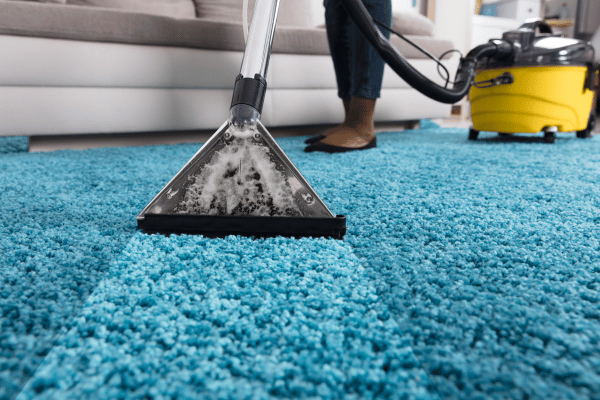
1. No-Shoes Policy
One of the simplest and most effective ways to keep your carpets clean is by implementing a no-shoes policy indoors. Shoes can track in dust, dirt, oil, and other contaminants, which can quickly settle into carpet fibers and lead to wear and stains over time.
Encourage family members and guests to remove their shoes at the door. Provide a designated area, such as a shoe rack or basket, near the entrance for convenience. You can also offer comfortable indoor slippers for guests to make them feel at ease.
2. Using Rugs and Doormats
Placing rugs and doormats strategically is a practical way to protect your carpets from dirt and debris. Start by using sturdy doormats outside each entrance to your home. These mats help catch dirt, dust, mud, rain, and snow from shoes before they can be tracked indoors.
Inside your home, use rugs in high-traffic areas such as hallways, entryways, and living rooms. Not only do rugs act as a barrier to protect your carpet, but they also add an extra layer of style and comfort to your space.
3. Regular Carpet Rotation
Rotating your rugs or rearranging furniture periodically is an excellent way to evenly distribute foot traffic across your carpets. Over time, high-traffic areas like walkways or spots near seating arrangements tend to experience more wear and tear, leading to uneven fading and flattening of carpet fibers.
Benefits:
- Prevents Uneven Wear: Helps maintain a consistent look across the entire carpet.
- Reduces Replacement Costs: Even usage ensures the carpet lasts longer, delaying the need for replacements.
- Enhances Aesthetic Appeal: Changing furniture placement can refresh the look of your room while protecting your carpet.
4. Stain Protection Treatments
Carpet protectors and sprays are an excellent way to safeguard your carpets against stains and spills. These treatments create a protective barrier on the carpet fibers, making it easier to clean up messes before they settle in. Stain protectors are particularly useful in high-traffic areas or households with children and pets, where spills are more likely.
For best results, apply stain protectors after a professional cleaning. This ensures the carpet is free from dirt and residue, allowing the protector to adhere properly and deliver maximum effectiveness. You can also choose products specifically designed for your carpet type, such as wool-safe sprays for natural fibers or general protectors for synthetic materials.
Tips for Applying Carpet Protectors:
- Test First: Always test the protector on an inconspicuous area to ensure it doesn’t affect the carpet’s color or texture.
- Even Application: Spray the protector evenly across the entire carpet, ensuring all areas are covered.
- Allow Drying Time: Let the carpet dry completely before walking on it to avoid transferring residue.
Common Mistakes to Avoid When Cleaning Carpets
1. Overwetting Carpets or Using Too Much Cleaning Solution
Excess water or cleaning solution can soak into the carpet backing, leading to mold, mildew, and long drying times. Always use the recommended amount of solution and extract as much moisture as possible.
2. Ignoring the Manufacturer’s Care Instructions
Every carpet has specific care requirements based on its material and construction. Ignoring these guidelines can result in damage or voided warranties. Always consult the manufacturer’s instructions before cleaning.
3. Using Harsh Chemicals That Damage Fibers
Strong chemicals can weaken carpet fibers, cause discoloration, and leave behind residue. Opt for gentle, carpet-safe solutions and test them on a small area before full application.
Experience Spotless Carpets with Modern Maids
Modern Maids is your trusted partner for professional house cleaning and maid services in Dallas, committed to making your home spotless, tidy, and welcoming. With a focus on quality and attention to detail, our team ensures your carpets are cleaned thoroughly, leaving them fresh, vibrant, and free from dirt and stains. Whether you need a routine clean or a deep carpet refresh, we’re equipped to handle it all, saving you time and effort.
Book your professional carpet cleaning service today through our convenient booking page or call us directly at (469)-430-8860 to experience the Modern Maids difference. Let us take care of your home while you enjoy a cleaner, more comfortable living space!
FAQs
1. What is the best thing to clean a dirty carpet?
The best way to clean a dirty carpet depends on the type of dirt and the carpet material. For general cleaning, a mix of warm water and a mild cleaning solution works well. For deep cleaning, a steam cleaner is highly effective. Spot cleaning with a mixture of white vinegar and water can handle stains quickly.
2. Does baking soda really clean the carpet?
Yes, baking soda is an effective and natural cleaner for carpets. It helps absorb odors and loosen dirt. Sprinkle baking soda over the carpet, let it sit for 15-20 minutes (or longer for deeper cleaning), and vacuum thoroughly for a refreshed surface.
3. What should you not clean the carpet with?
Avoid harsh chemicals like bleach or ammonia, as they can discolor or weaken carpet fibers. Similarly, using overly soapy solutions can leave residue behind, attracting more dirt and causing damage over time.
4. Can I use Dawn dish soap to clean my carpet?
Yes, Dawn dish soap can be used to clean carpets, but it should be diluted. Mix a few drops with warm water and use it for spot cleaning. Avoid over-saturating the carpet and rinse thoroughly to remove any soapy residue.
5. What should not be used in a carpet cleaner?
Avoid using oily or solvent-based products in carpet cleaners, as they can leave behind residue. Harsh detergents or anything not specifically labeled for carpet use should also be avoided to prevent damage to the fibers.
6. Is it better to shampoo or steam clean carpets?
Steam cleaning is often better because it removes dirt and allergens more effectively using hot water extraction. Carpet shampooing can be effective for heavily soiled areas but may leave more residue if not done properly.
7. Is it cheaper to clean your own carpet?
Cleaning your carpet yourself can be cheaper upfront, especially if you have the necessary tools and cleaning products. However, professional cleaning provides deeper results and may save money in the long run by extending your carpet’s lifespan.
8. What is the best homemade solution for cleaning carpets?
A mixture of equal parts white vinegar and warm water is one of the best homemade solutions for cleaning carpets. Add a few drops of dish soap for extra cleaning power, and use it to tackle stains or refresh the entire carpet.
